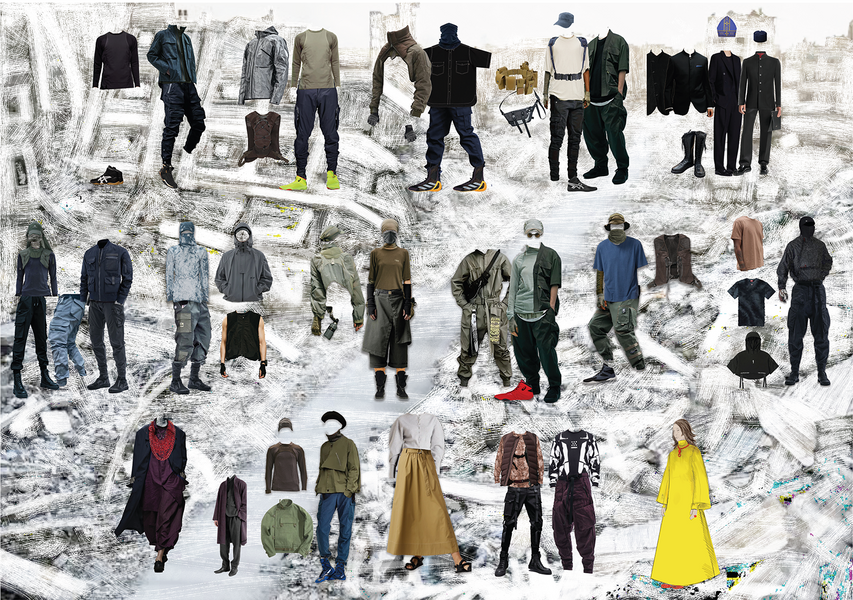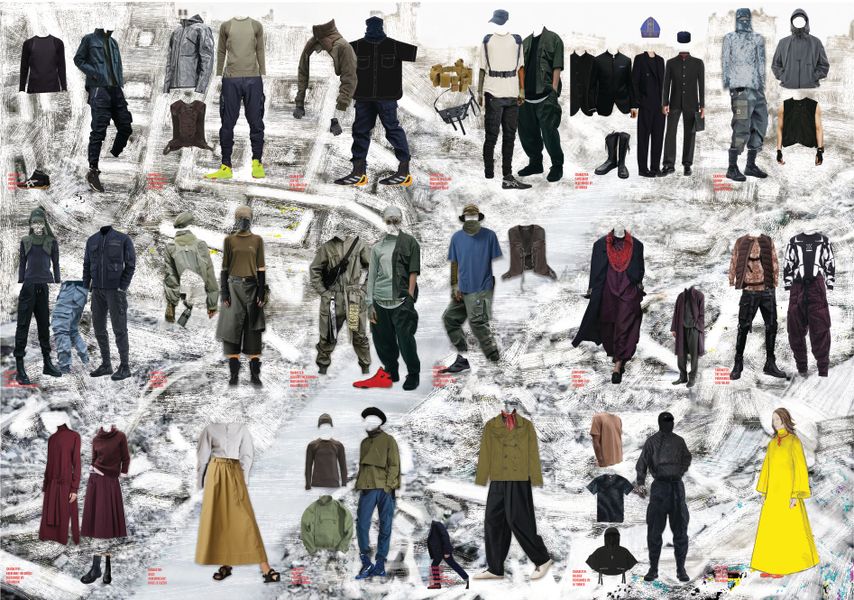
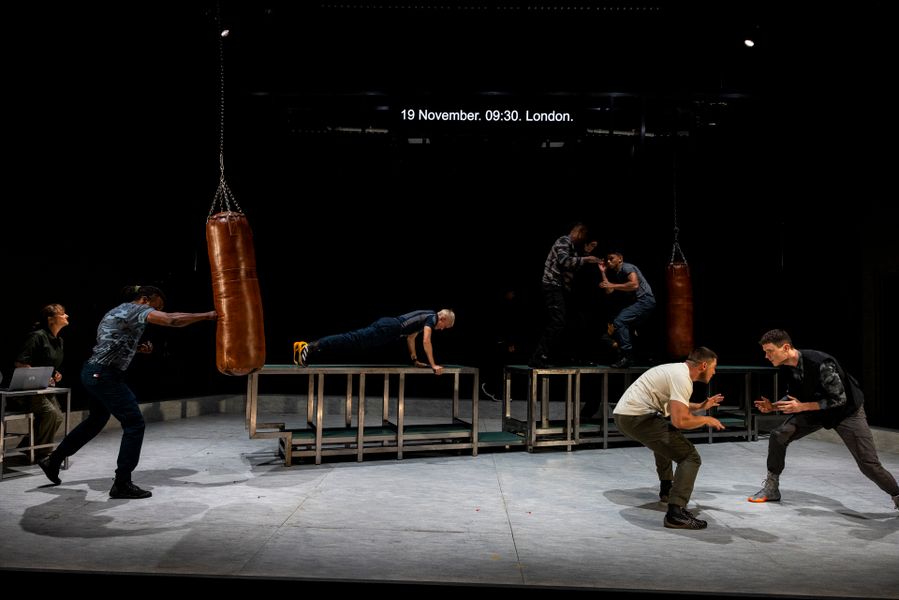

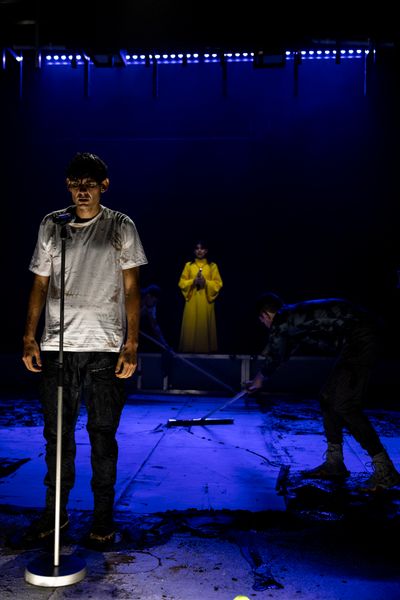
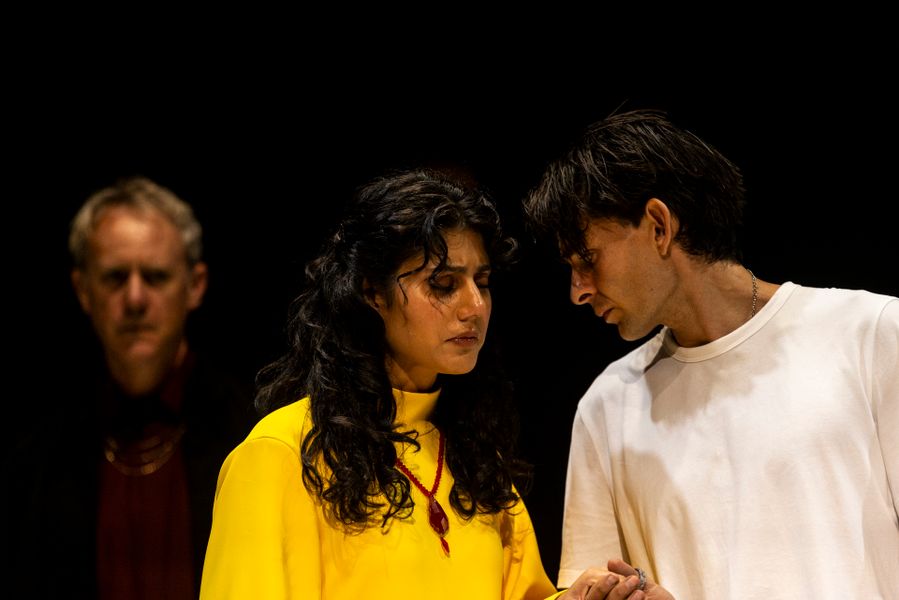
Take a look at director Marion Potts' directorial vision, and Anna Tregloan's set and costume designs for the 2025 production of Henry 5.
Shakespeare’s Henry V commences with the Chorus, who narrates our journey throughout the play with multiple touch points. In considering this frame, director Marion Potts considered that we are always an audience to war, and that history is always a perspective on, or translation of, events. Who is the Chorus? Can we trust their retelling of the story? Why are they the single source of truth here? Who does that make us, in bearing witness to these events? After all, Henry V is considered by some to be a glorification of actual events - to some, Henry is a war hero, to others a war criminal. There are always going to be perspectives on history - it is a subjective endeavour. In this production, the Chorus becomes a war tribunal, an actualisation of the interrogation. Within this interrogation and frame, the story of Henry V is played out. We are putting the Chorus's version of the events on show, on trial in an ethical forum - we are the citizens of the world.
This focus on the subjectivity of war led Potts to decide to have the French characters speak in their own language, not usually done in a production of Henry V. This allows a non-French speaking audience to feel othered, relying on surtitle translations to follow the scene and dialogue.
Crucial to the production for Potts, was the casting of a deliberately young ensemble of actors. She wanted to reflect the reality that it is mostly young men who go to war, at the peak of their physical prowess, and too often lost in battle. This highlights the cycle of patriarchal societies, in which young men enter a world of masculinity, contest and conquest. This casting is reflected across both English and French troops, showing the similarities of the two empires.
In preparation for the production, director Marion Potts, designer Anna Tregloan and actor JK Kazzi (Henry) visited Azincourt in France, where the Battle of Agincourt took place. While highly famed in English history, by comparison the field in France was barely marked and easy to miss. They considered that this was not a historical story that the French wanted to remember. The group visited the museum and heard French perspectives on the real events, and negative perceptions of Shakespeare’s retelling of the events.
In this production Shakespeare’s script is condensed and edited, taking out plot lines and narratives that connect with other Shakespeare plays that audiences may not be familiar with. Henry V is, after all, a sequel to Henry IV Parts 1 and 2. This way, the play and narrative can stand alone without relying on audience’s prior knowledge, and it focuses the story on Henry more specifically.





The set design for the production is sparse yet multidimensional. A long steel framed gantry is the centrepiece of the design. This gantry transforms throughout to have several functions across several settings. It forms a tribunal dock, with opening gate for each speaker to enter and exit. It is a jungle-gym like structure for Henry’s troops to use in training. It is a table for laying out of military plans. It becomes the tunnels Through which Henry’s army crawls silently to ambush the enemy. It can be broken apart with one half stood on end, forming an outpost and viewing point for Henry’s troops to keep watch from afar. The gantry is pushed and pulled by the athletic cast, and swings out over the audience in a cantilever when Henry delivers his stirring ’Once more unto the breach, dear friends’ speech.
Hanging above the gantry is a suspended truss structure, from which can hang punching bags for training. Punching bags also come to represent bodies hanging. Also suspended above the stage is a surtitle screen. This allows for text to be displayed in a number of ways, from settings and locations, and character names, and listing the names of fallen soldiers in the battle. Crucially, the screen displays the translation of the French dialogue into English, allowing for the French troops to speak in their own language.
In the Battle of Agincourt, the muddy ground in which many solders died is recreated in an abstracted way. Buckets of mud are emptied onto the cool grey floor. The youthful and athletic cast demonstrate a choreographed battle sequence in which they run and fall over and get back up again, smearing the mud across the stage and getting covered in it themselves. This makes for a stark contrast between the visceral world of battle, and the clinical world of the tribunal and royal court. After the battle, the mud is swept and cleared to make way for the royal court. The mud is made from a non-toxic and biodegradable powder, which volumises when it combines with water.
Microphones on stands are used in various ways throughout the production, including the tribunal stand for the Chorus, and for the cast to relay abstracted sound and vocal effects of the soldiers fighting, and dying, in war.

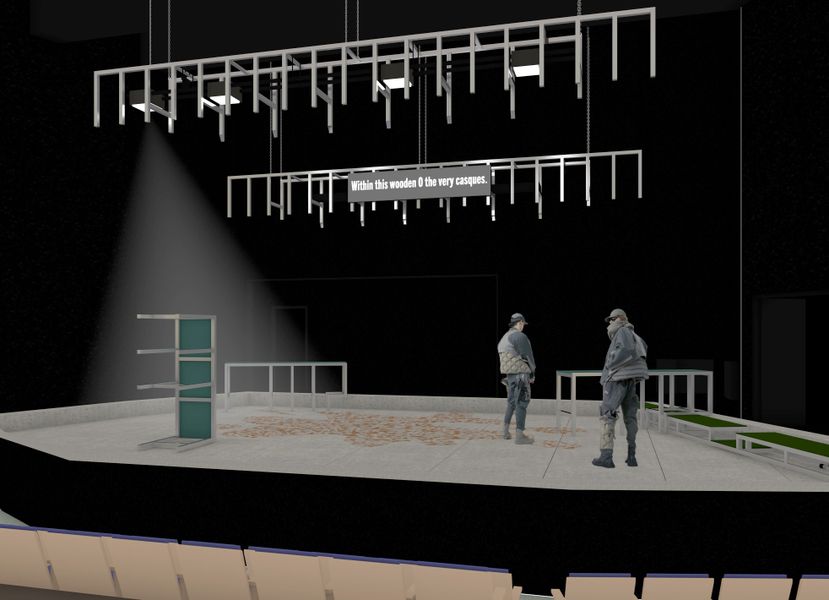

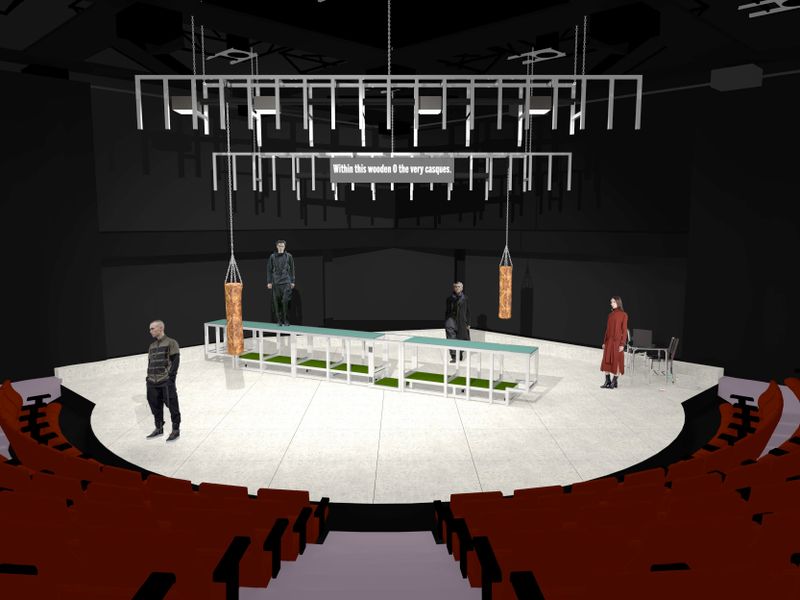
Potts and Tregloan chose contemporary military and streetwear as a focus for costume design. JK Kazzi in the titular role is not clothed in military dress, rather a more youthful and casual look, evocative of modern leaders in warfare such as Volodomir Zelensky. Characters wear cargo pants and camouflage prints, clothing that was designed for practical use in warfare, but have become part of everyday fashion. Colours are muted and rich with browns and blues, with Henry’s white shirt striking when splattered with brown mud. Katherine‘s is the only costume that is not streetwear. She wears a striking yellow dress, a bright contrast to the muted colours on stage that surround her. Katherine’s wedding dress is symbolic of her being presented as a gift to Henry, in a time when women of stature were used in bargaining between two parties. French costumes are neater and more stylish than the English troops, and have notes of red in the French colour palette, compared to the blue of the English costumes.
